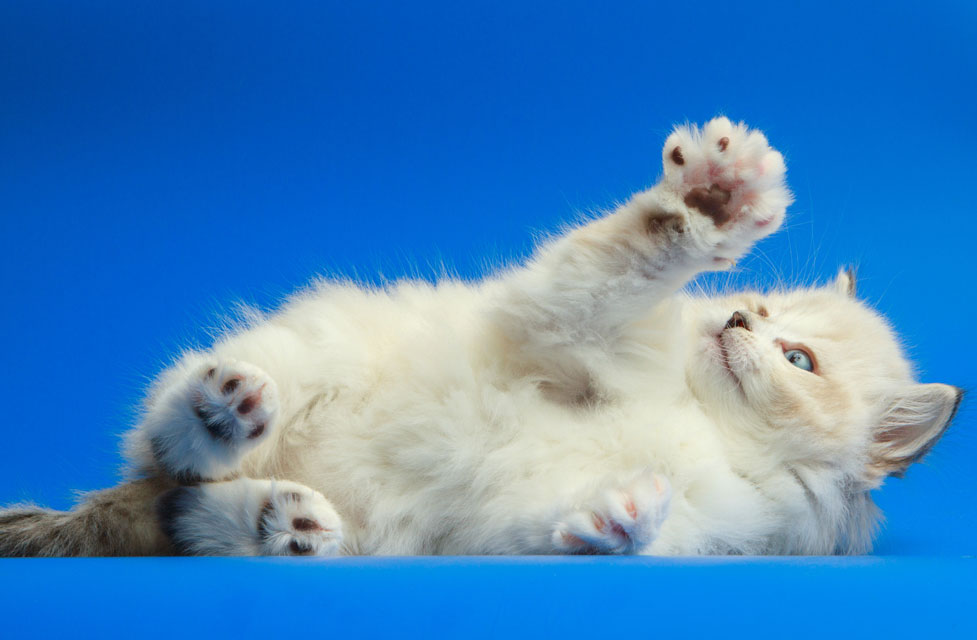All VCA Veterinary Clinics Have Banned Declaws

VCA is a corporate veterinary business with branches in many cities across the US and a few in Canada. Because they can share resources and have specialists on staff to help primary care doctors with difficult cases, VCA clinics are popular.
As of February 21, 2020, VCA clinics no longer offer cat declawing services.
Why Did VCA Stop Declawing Cats?
VCA states that they believe that cat owners should provide a safe home that supports their cats' natural behaviors and allows them to integrate into the home thoroughly. They also feel that any procedure provided by VCA should be medically warranted for the cat.
Why Aren't Declaw Surgeries Medically Warranted?
In almost all cases, cat declaws are done for the benefit of the humans in the home, not because of any medical necessity for the cat. In fact, claws and the ability to scratch contribute significantly to cats' mental and physical health. Here's how:
- Cats scratch to mark their territory. It helps them decrease stress and feel that they can communicate with others in their environment.
- Cats scratch to exercise and stretch. A good scratch works out the muscles and tendons from the toes up through the neck and back.
- Cats let off steam by scratching. And we all know how important it is to let off steam. It's the same for cats, who may develop health or mental problems if they can't let out pent-up energy.
When people have their cats declawed, it is to protect their belongings or themselves from cat scratches, not because of medical necessity or a desire to improve the quality of life of the kitty.
Declawing Is Immensely Painful
A declaw is not the same as a nail trim. Claws grow out of the end of the last bone of each toe. Removing claws requires amputation surgery, which is what declawing is. Each toe is amputated at the first joint, severing nerves, blood vessels, ligaments, and tissue.
The recovery from declaw surgery is excruciating for cats, which are digitigrade animals. That means they walk on their toes instead of the bottoms of their feet like us plantigrade humans. So, when we perform a declaw of all 10 front toes, the cat must then walk directly on 10 amputation sites immediately upon waking up. If all 4 feet are declawed, it's 18 amputation sites.
Declaw surgeries carry a high rate of acute (sudden) complications, too, such as bleeding, opening up of the wounds, and infections.
Plus, declaws also have a high rate of long-term, or chronic, complications like regrowth of claws, arthritis in the declawed joints, and chronic pain.
Declaw surgeries can lead to many behavioral issues in cats, including inappropriate urination, biting, and a more skittish personality.
But What About the Scratching?
So, if you don't have your cat declawed, what will you do about the problem of your cat scratching items or people in your home? Don't worry—there are multiple things you can do to avoid the problem of cat scratching in your home.
- First, understand that scratching is normal and healthy for cats.
- Next, provide great alternatives that cats like to scratch more than they do carpet or furniture.
- Reward your cat for using the alternatives.
- Consider Soft Paws claw caps to protect items and skin from accidental cat scratches.
- Make sure to reduce or relieve any sources of cat stress in your home. That means increasing interactive playtime, decreasing rivalry between cats by providing plenty of resources, using Feliway to calm your cat, and reducing the ability of outside cats to upset your indoor cat.
Other Declaw Bans
VCA isn't the only organization that opposes declawing cats. Cities, states, and even countries around the world have banned or are considering banning declawing soon. More than ever, declawing cats is deemed to be inhumane by veterinary professionals.
See VCA's press release on their declawing ban here: VCA Declawing Ban.
You May Also Like These Articles:
Declawing Cats: Just Don't Do It
New York Becomes First U.S. State to Ban Declaw Surgeries
Declawing Cats: Banning Declaw Surgeries
Notice: Ask-a-Vet is an affiliated service for those who wish to speak with a veterinary professional about their pet's specific condition. Initially, a bot will ask questions to determine the general nature of your concern. Then, you will be transferred to a human. There is a charge for the service if you choose to connect to a veterinarian. Ask-a-Vet is not manned by the staff or owners of CatHealth.com, and the advice given should not delay or replace a visit to your veterinarian.





